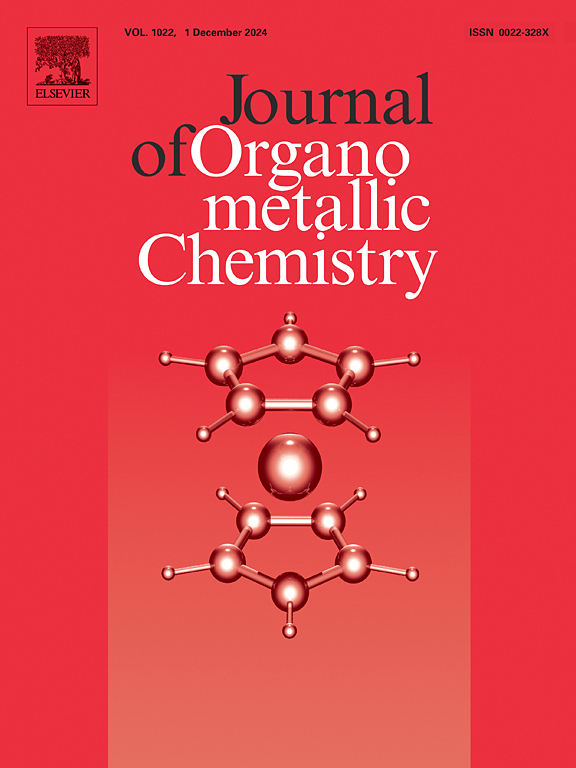A review of the latest advances in click reaction using magnetite nanocatalysts
IF 2.1
3区 化学
Q3 CHEMISTRY, INORGANIC & NUCLEAR
引用次数: 0
Abstract
Magnetic nanocatalysts, in particular magnetite (Fe₃O₄)-based, have been leading the way in the last decade for serving as the key to facilitating efficient, green, and sustainable organic reactions. One of their most significant applications is in the area of click chemistry, more particularly copper-catalyzed azide-alkyne cycloaddition (CuAAC) reactions, which find universal application in the synthesis of 1,2,3-triazoles important pharmacophores in pharmaceuticals, agrochemicals, and functional materials. This review thoroughly discusses the advancements from 2018 until 2025 in the design, synthesis, and application of Fe₃O₄-based magnetic nanocatalysts in click reactions. The catalysts offer many advantages, such as high catalytic performance, superb regioselectivity, mild reaction conditions, green solvents (primarily water or water mixture), and decent reusability due to their inherent magnetic properties. Different structural strategies have been tried to improve their performance, including surface functionalization with organic ligands, metal ion doping (with copper as a particular example), and hybrid material design. Reaction mechanisms, catalysis efficiency, etc., are also discussed in the review. More recent trends such as bio-based supports, metal-organic frameworks, and sonochemical activation are also discussed, which put magnetite nanocatalysts at the forefront of future sustainable click chemistry. Additionally, structural and morphological characterizations of selected magnetic nanocatalysts have been incorporated to provide deeper insight into their properties and catalytic performances.
综述了磁铁矿纳米催化剂在点击反应中的最新进展
磁性纳米催化剂,特别是基于磁铁矿(Fe₃O₄)的磁性纳米催化剂,在过去十年中一直处于领先地位,成为促进高效、绿色和可持续有机反应的关键。它们最重要的应用之一是在点击化学领域,特别是铜催化叠氮-炔环加成(CuAAC)反应,它在合成1,2,3-三唑(药物,农药和功能材料中的重要药效载体)中得到普遍应用。本文综述了2018年至2025年在Fe₃O₄磁性纳米催化剂的设计、合成和在点击反应中的应用方面的进展。该催化剂具有催化性能高、区域选择性好、反应条件温和、溶剂环保(主要是水或水混合物)以及由于其固有的磁性而具有良好的可重复使用性等优点。已经尝试了不同的结构策略来提高它们的性能,包括有机配体的表面功能化,金属离子掺杂(以铜为例)和混合材料设计。对反应机理、催化效率等方面也进行了讨论。此外,本文还讨论了生物基载体、金属有机框架和声化学活化等最新趋势,这些趋势将磁铁矿纳米催化剂置于未来可持续点击化学的前沿。此外,所选磁性纳米催化剂的结构和形态特征也被纳入其中,以更深入地了解它们的性质和催化性能。
本文章由计算机程序翻译,如有差异,请以英文原文为准。
求助全文
约1分钟内获得全文
求助全文
来源期刊

Journal of Organometallic Chemistry
化学-无机化学与核化学
CiteScore
4.40
自引率
8.70%
发文量
221
审稿时长
36 days
期刊介绍:
The Journal of Organometallic Chemistry targets original papers dealing with theoretical aspects, structural chemistry, synthesis, physical and chemical properties (including reaction mechanisms), and practical applications of organometallic compounds.
Organometallic compounds are defined as compounds that contain metal - carbon bonds. The term metal includes all alkali and alkaline earth metals, all transition metals and the lanthanides and actinides in the Periodic Table. Metalloids including the elements in Group 13 and the heavier members of the Groups 14 - 16 are also included. The term chemistry includes syntheses, characterizations and reaction chemistry of all such compounds. Research reports based on use of organometallic complexes in bioorganometallic chemistry, medicine, material sciences, homogeneous catalysis and energy conversion are also welcome.
The scope of the journal has been enlarged to encompass important research on organometallic complexes in bioorganometallic chemistry and material sciences, and of heavier main group elements in organometallic chemistry. The journal also publishes review articles, short communications and notes.
 求助内容:
求助内容: 应助结果提醒方式:
应助结果提醒方式:


